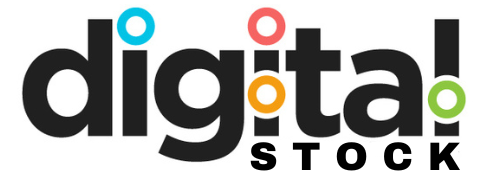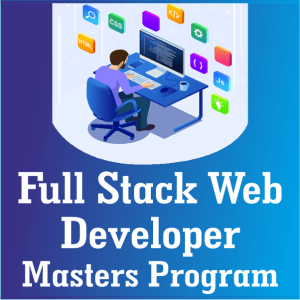Description
SQL Basic to Advanced Course
SQL (Structured Query Language) is the backbone of relational databases, widely used for managing and manipulating structured data. If you’re looking to become proficient in SQL and harness the power of databases for both small-scale and enterprise-level applications, the SQL Basic to Advanced Course is the perfect resource. Whether you’re a beginner looking to understand the fundamentals or an experienced professional aiming to master advanced SQL techniques, this course covers everything from the basics of SQL queries to complex data manipulation and optimization techniques. With hands-on exercises and real-world examples, you’ll gain the skills required to effectively query, update, and manage data in databases.
Why Learn SQL Basic to Advanced Course?
SQL is the most important language for interacting with databases, and learning it opens up many career opportunities. Here’s why SQL is an essential skill for anyone working with data:
- Widespread Use: SQL is used by all major relational database management systems (RDBMS) like MySQL, PostgreSQL, Microsoft SQL Server, and Oracle. Mastering SQL means you can work with databases in any of these systems.
- Data Management: SQL is indispensable for managing, querying, and manipulating structured data. Whether you are analyzing data, creating reports, or running automated tasks, SQL is the language that makes it possible.
- High Demand: SQL proficiency is a critical skill in data analysis, software development, business intelligence, and database administration. Many jobs in tech and data require knowledge of SQL.
- Powerful for Analytics: With SQL, you can handle large datasets and perform data analysis efficiently, which is key for data-driven decision-making in industries like finance, healthcare, retail, and more.
What You’ll Learn in the SQL Basic to Advanced Course
The SQL Basic to Advanced Course takes you step by step from the fundamental concepts of SQL to the most advanced techniques, giving you the skills to effectively use SQL for a variety of use cases. Below is an outline of the key topics covered in this comprehensive course:
1. Introduction to Databases and SQL
- What is a Database?: Learn about relational databases, tables, rows, and columns. Understand how data is stored and organized in a relational database.
- What is SQL?: Introduction to SQL, its purpose, and its role in querying and manipulating data stored in databases.
- Setting Up SQL Environment: Learn how to set up a local or cloud-based database environment using popular RDBMS like MySQL, PostgreSQL, or SQL Server.
- Basic SQL Syntax: Get familiar with SQL’s basic syntax, including how to write and execute simple queries.
2. SQL Queries: The Basics
- SELECT Statements: Learn how to retrieve data from one or more tables using the
SELECTstatement. Filter data usingWHEREconditions. - Sorting and Filtering Data: Learn to sort data with
ORDER BY, filter data usingWHEREclauses, and work with comparison operators like=,>,<,IN, andBETWEEN. - Working with NULL Values: Understand how to handle
NULLvalues in SQL and how to filter or update them properly. - Limit and Offset: Use
LIMITto restrict the number of results andOFFSETto paginate large datasets.
3. Aggregating Data
- Group By Clause: Learn to group data with the
GROUP BYclause and aggregate results using functions likeCOUNT(),SUM(),AVG(),MIN(), andMAX(). - HAVING Clause: Understand the difference between
WHEREandHAVINGand how to useHAVINGto filter grouped data. - Combining Aggregates: Learn how to combine multiple aggregation functions in a single query to derive insights from data.
4. Joins: Combining Data from Multiple Tables
- Inner Join: Learn how to combine rows from two or more tables based on matching values in columns.
- Left Join (or Left Outer Join): Understand how to retrieve all rows from the left table and matching rows from the right table, even if no match exists.
- Right Join (or Right Outer Join): Explore how to retrieve all rows from the right table and matching rows from the left table.
- Full Outer Join: Understand how to retrieve matching rows from both tables and non-matching rows from either side.
- Self Join: Learn how to join a table with itself to retrieve hierarchical data or related rows.
5. Subqueries and Nested Queries
- Subqueries in SELECT, WHERE, and FROM Clauses: Learn to use subqueries (queries within queries) to filter, select, or calculate values.
- Correlated Subqueries: Understand how correlated subqueries differ from regular subqueries and how they can be used to perform complex comparisons.
- Using EXISTS and IN: Master the use of
EXISTSandINto simplify subqueries and check for the existence of data or membership in a set.
6. Data Modification Statements
- INSERT: Learn how to add new rows of data into tables with the
INSERTstatement. Understand how to insert multiple rows in one command. - UPDATE: Master the
UPDATEstatement to modify existing data in your tables. Learn to update specific rows using conditions and filtering. - DELETE: Learn how to delete rows from a table using the
DELETEstatement. Understand how to safely delete data without affecting the integrity of your database.
7. Advanced SQL Techniques
- Indexes: Learn how to create and use indexes to improve the performance of queries, especially for large tables with millions of rows.
- Views: Understand what a view is, how to create and manage views, and how to use them to simplify complex queries.
- Stored Procedures and Functions: Learn how to write stored procedures and functions to encapsulate logic and improve query efficiency.
- Triggers: Understand the concept of triggers and how to use them to automatically perform actions when certain events occur in the database.
8. Database Design and Normalization
- Database Design Principles: Learn the basics of designing a relational database, including identifying entities, relationships, and keys.
- Normalization: Understand the process of normalizing a database to eliminate redundancy and ensure data integrity. Learn about the different normal forms (1NF, 2NF, 3NF).
- Denormalization: Understand when and why you might choose to denormalize a database for performance reasons.
9. Advanced SQL Topics
- Transactions: Learn how to use SQL transactions to ensure data consistency, including commands like
BEGIN,COMMIT, andROLLBACK. - Concurrency Control: Understand how SQL handles concurrent data access and how to use locking mechanisms to avoid conflicts.
- Performance Tuning: Learn techniques for optimizing SQL queries, analyzing query performance, and using
EXPLAINto understand execution plans. - Window Functions: Master window functions such as
ROW_NUMBER(),RANK(), andLEAD()for analyzing data over a specified range of rows.
10. SQL Security Best Practices
- User Management and Permissions: Learn how to create database users, assign roles, and manage permissions to ensure database security.
- Data Encryption: Understand how to encrypt sensitive data and implement security measures to protect it from unauthorized access.
11. Final Project: Building and Managing a Database
- Creating a Real-World Database: Apply everything you’ve learned by creating a complete database for a business, project, or application.
- Query Optimization: Optimize your queries for performance by using indexes, joins, and subqueries efficiently.
- Managing Data Integrity: Ensure the integrity of your database by implementing constraints, triggers, and validation.
Benefits of the SQL Basic to Advanced Course
- Comprehensive Coverage: The course covers all levels of SQL, from basic queries to advanced techniques, making it ideal for beginners and experienced developers alike.
- Practical Application: Hands-on examples, exercises, and a final project ensure you apply your learning in real-world scenarios.
- Career Growth: SQL is a fundamental skill for many roles, including data analysts, database administrators, and software engineers. Mastering SQL will increase your job opportunities and earning potential.
- Expert Guidance: Learn from experienced instructors who will provide insights, tips, and answer any questions you may have.
- Lifetime Access: Get lifetime access to course materials, allowing you to learn at your own pace and revisit content whenever needed.
The SQL Basic to Advanced Course is the ideal path for anyone looking to master SQL and become proficient in database management and querying. With a solid foundation in SQL, you’ll be equipped to work with any relational database system and tackle complex data challenges. Whether you’re looking to improve your career in data science, database administration, or software development, this course will provide the necessary skills and knowledge. Start learning SQL today and unlock the power of databases for your professional growth!
Also Checkout
Best Bulk WhatsApp Sender with Reseller Panel 3.5
Also Checkout – https://digitalstock.co.in/product/bulk-whatsapp-sender-reseller-panel/
Official Contact – https://coderedsoftwares.com/contact













Reviews
There are no reviews yet.